67% Faster Shoulder Growth!
One Master Tip!
Today I’m finally going to show you how to accelerate your SHOULDER gains by not 65…not 66…but a MASSIVE 67%! BUT NOT 68%! That’s Just CRAZY! But in all seriousness guys, the title is clickbait just to get your attention but the information here is top notch and if you’ve missed any of the previous videos in this series, just click the playlist link HERE!
So the MASTER TIP I want to share with you guys to help accelerate your overall shoulder growth is this…If no matter what you do, you never actually “feel” your delts working while training them or you never get soreness in your delts after training them, that typically means your mind-muscle connection is very poor. More than that, it means you’re probably letting other muscle groups take over during each exercise when training your delts and this is definitely why your shoulders are still underdeveloped. So what’s the solution here? Well, it’s quite obvious if you think about it. You need to learn how to actually engage your front, middle & rear deltoids when training.
Is Shoulder Isolation Necessary?
Generally speaking, you don’t really need to isolate your deltoids. Even with my own clients, heavy pressing exercises such as the overhead press, incline press, dips and close grip bench press are enough to properly activate all three deltoid heads and see growth. In fact, I bet if you just trained with more sets of heavy compound movements like these versus isolation type movements, you would see much faster growth overall.
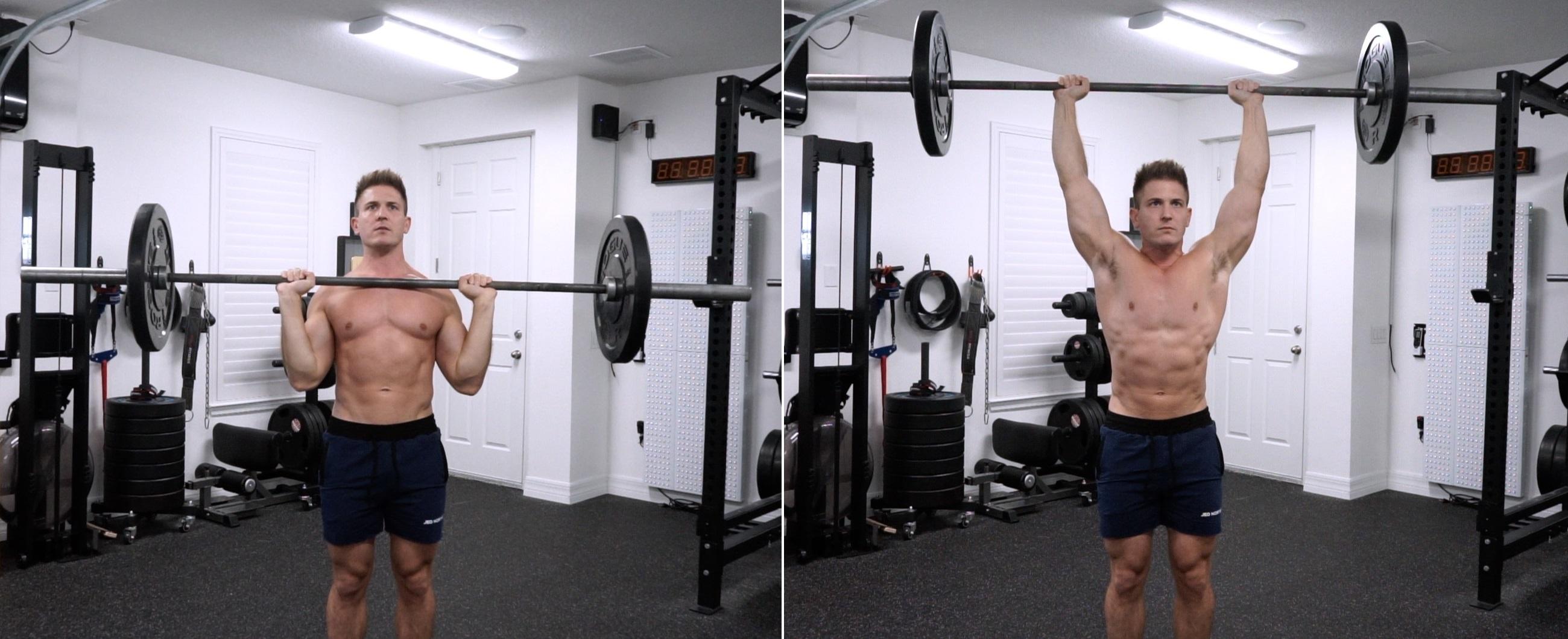
But there are cases where some people just have such a poor mind-muscle connection to the deltoids that they tend to perform these movements only properly activating their triceps, chest, back, traps…and virtually every other muscle BUT the three deltoid heads. So if this sounds like you, this is why you’re not growing and here is what you need to do. First, take a deep breath, kick your ego to the curb, and let’s start training with some lighter weights so that you can finally learn what it truly feels like to properly activate your deltoids when training.
Now let’s be clear, I’m not saying that light weights are better for overall growth. Progressive overload combined with volume will always be KING. But utilizing lighter weights for the time being will help to establish a much stronger mind-muscle connection (MMC) to the deltoids, so that when you go back to your heavy compounds exercises like the OVERHEAD PRESS, your deltoids will be firing properly on every repetition. You may even notice a sudden increase in how much weigh you can lift as well. So grab a pair of 5lbs or 10lbs dumbbells and let’s focus on some front, lateral and bent-over raises.
Lateral Raises
First up will be lateral raises targeting the MIDDLE DELTOIDS. Now it doesn’t matter if you’re performing straight arm or bent arm raises. The mistake is always the same. Most people only focus on lifting their arm UP versus lifting their arm UP & AWAY from their body. This slight change in form will be the difference between engaging more traps or more middle deltoid during the movement.
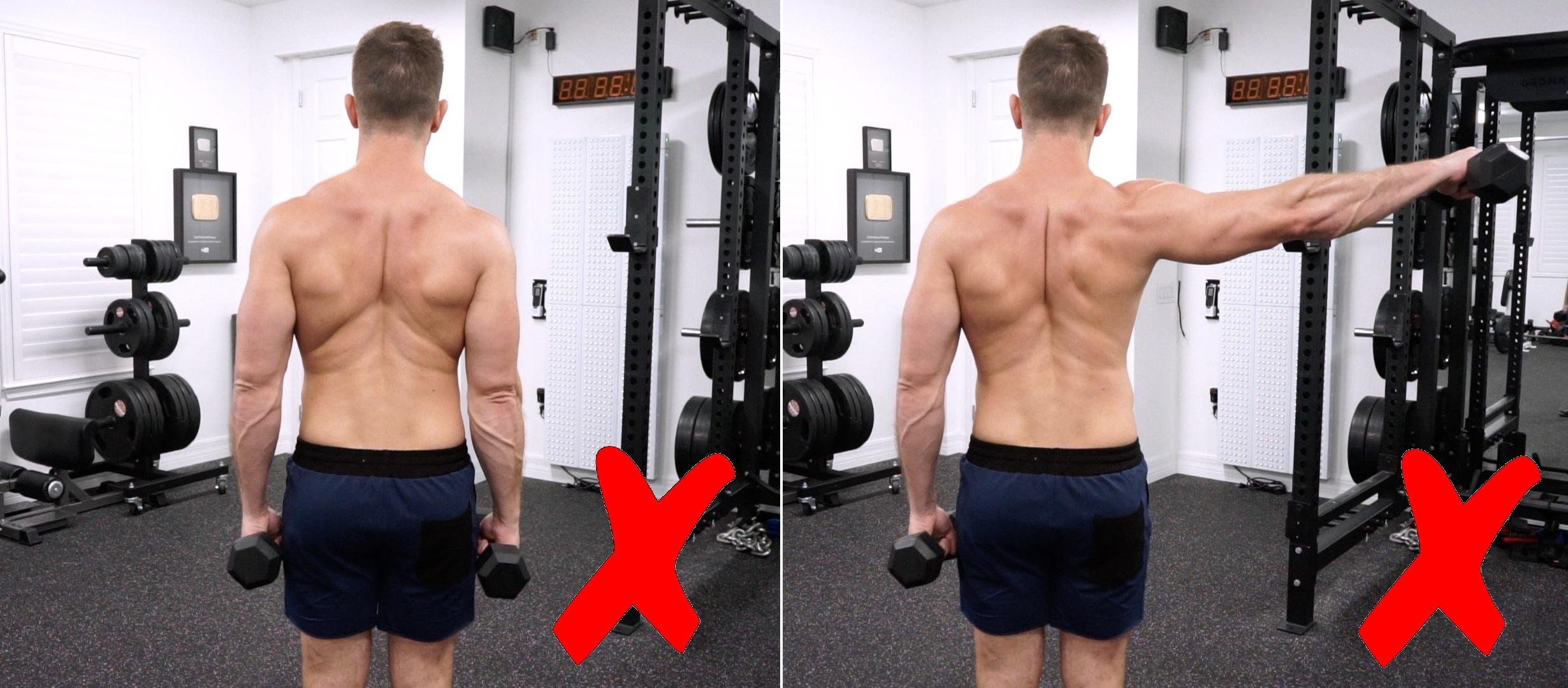
So what you want to do is simply keep your shoulder down and almost raise the dumbbell AWAY from your body, like you’re trying to keep your wrist AWAY from your head.
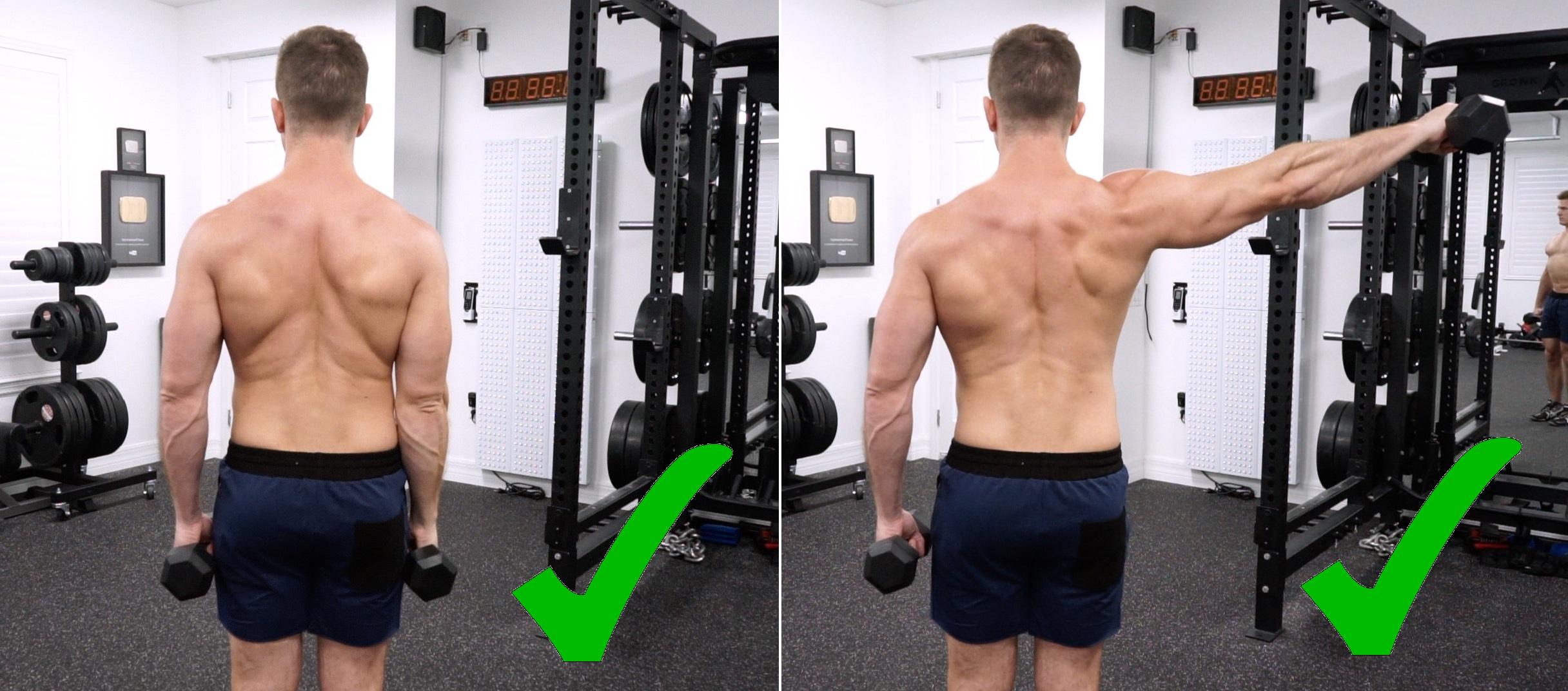
Your traps WANT to help so you have to really pay attention and focus on turning them off as much as possible.
Front Raises
Now, same thing applies to the front raise. If you keep your shoulder blades retracted throughout the movement, other muscle groups will have a tendency to help out, namely your traps and chest. Traps for the same reason as just mentioned, but why your chest? Well, because now you’ve turned the front raise into sort of a low to high chest fly. Remember, in my “How To Barbell Bench Press” video I explained how you always activate the muscle group that is in front the most. While with the bench press, WE WANTED the shoulders to be back and the chest to be in front in order to maximize chest engagement, but this time we want the exact opposite.
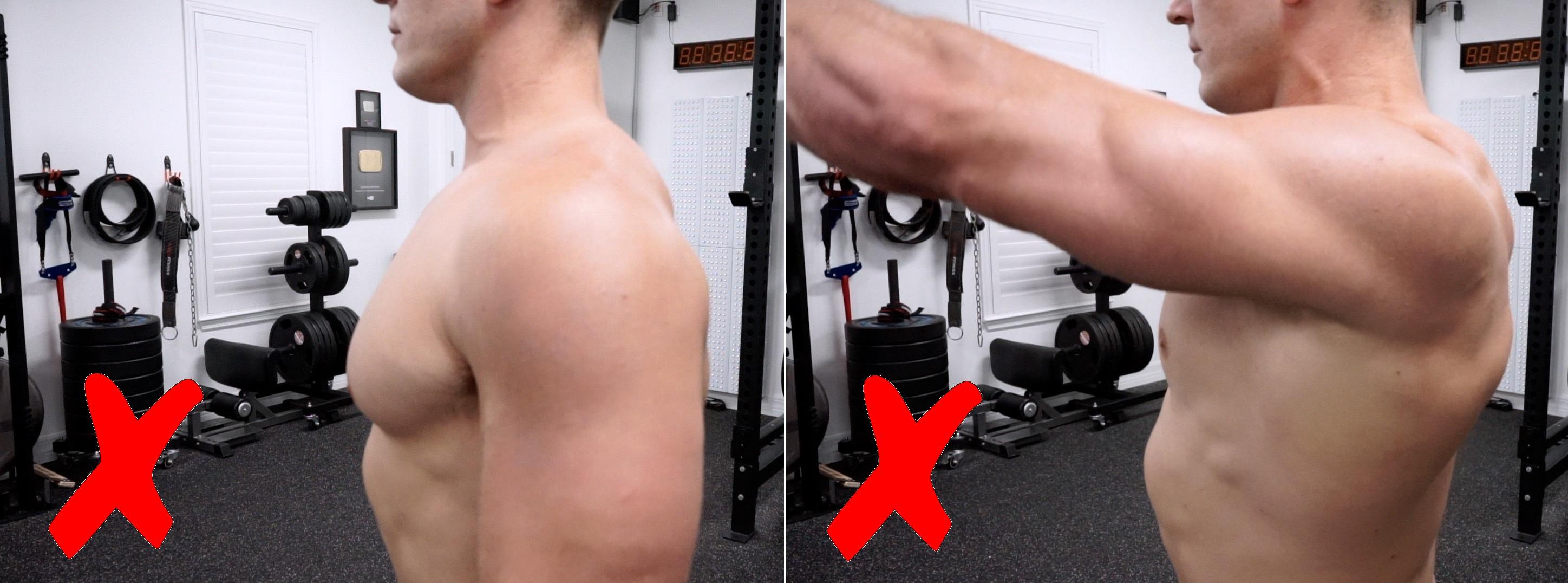
We need the chest to be disengaged and the shoulder protracted so that we can actually activate it properly. So, again, what you want to do is raise the dumbbell while reaching forward without rounding your back. Protract your shoulder, almost as if you’re trying to touch the wall in front of you.
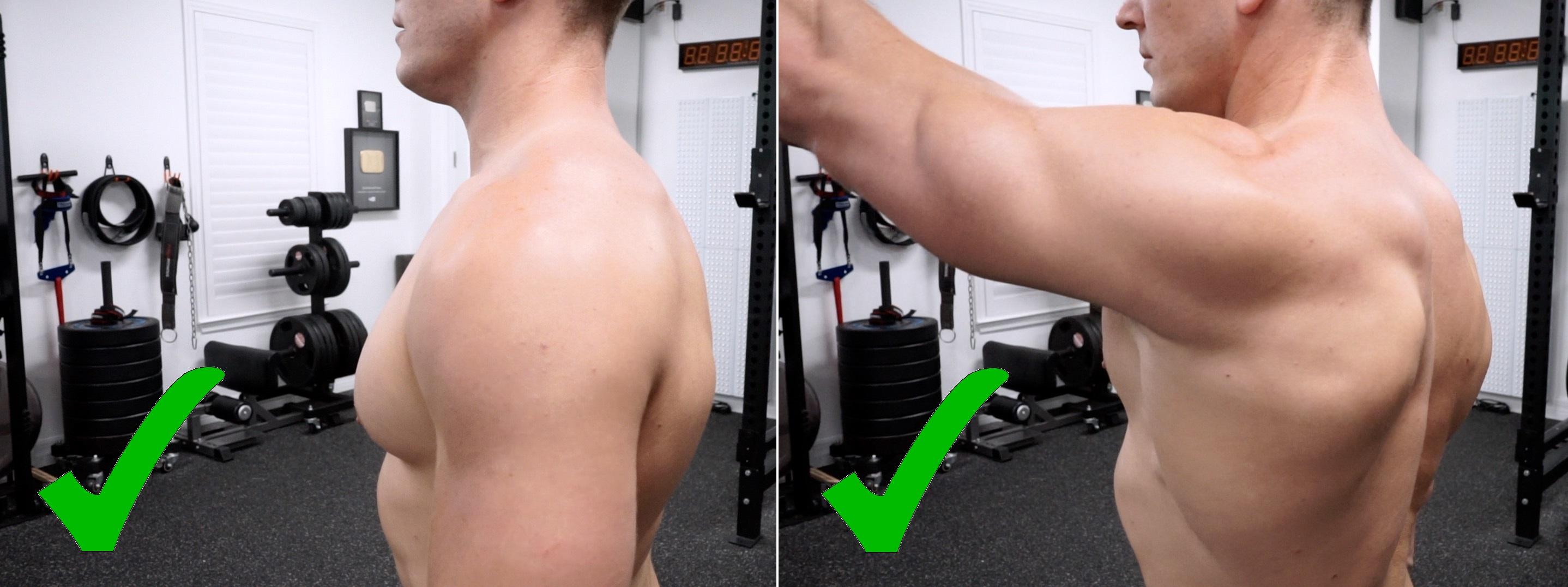
A great way to check if you’re performing it the right way is to actually do one arm at a time and use your free hand to touch your upper chest while doing the exercise. If you feel your upper chest working, you are doing it wrong.
Bent-Over Raises (Rear Delt Fly)
And finally guys, the bent-over raise. Again, the same principles apply. Now for this, you don’t necessarily need to be all the way bent-over and parallel to the floor. Just bend over as much as possible and for the purposes of this exercise I actually want you to use a bench to rest your head on. This way you can better focus on the rear deltoid. Once more, what you DON’T want to do is to actually retract your shoulder blades and then raise the arm. If you do that, you’d be targeting your traps and rhomboids far more than your rear deltoids.
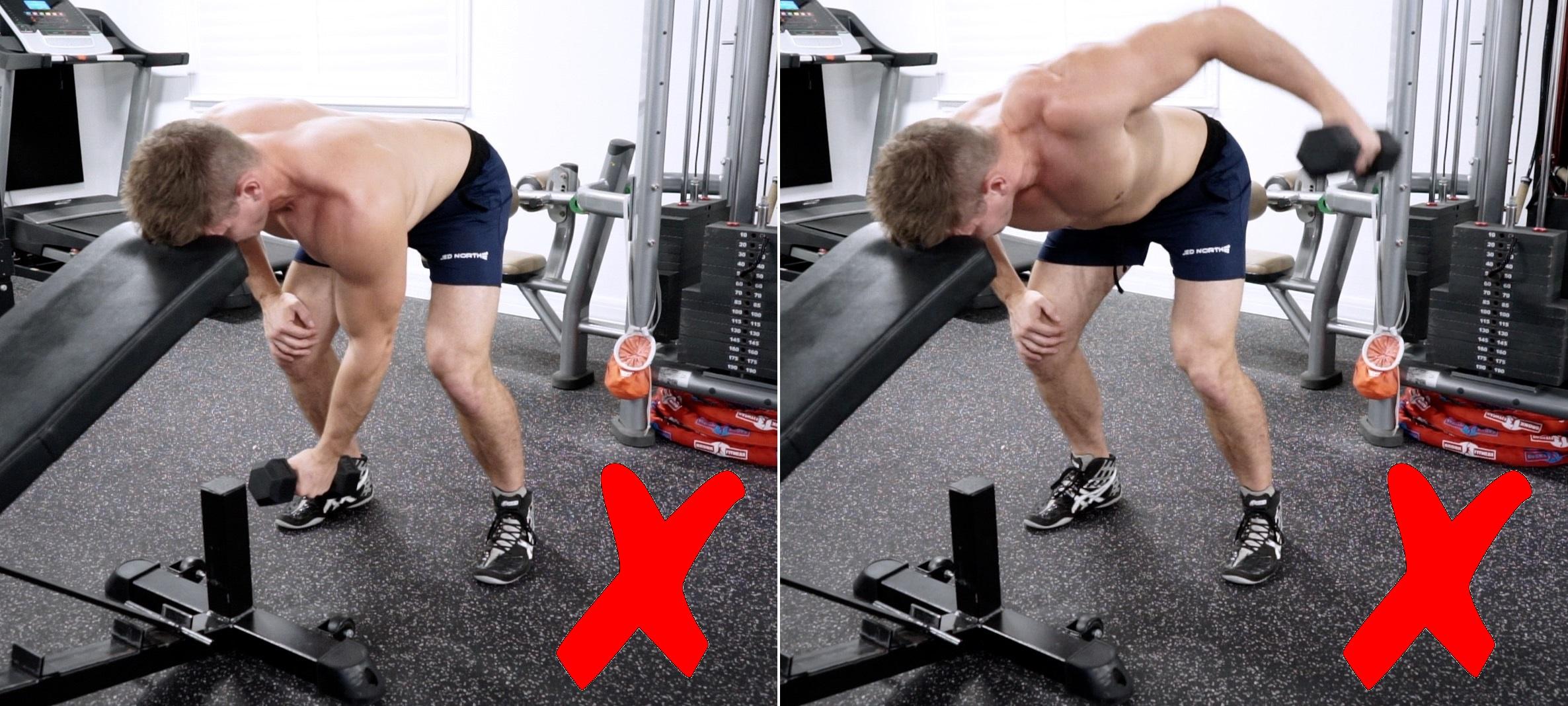
So, to keep the focus on your rear delts, do not retract your scapula, and again move the dumbbell by extending your arm away from your body.
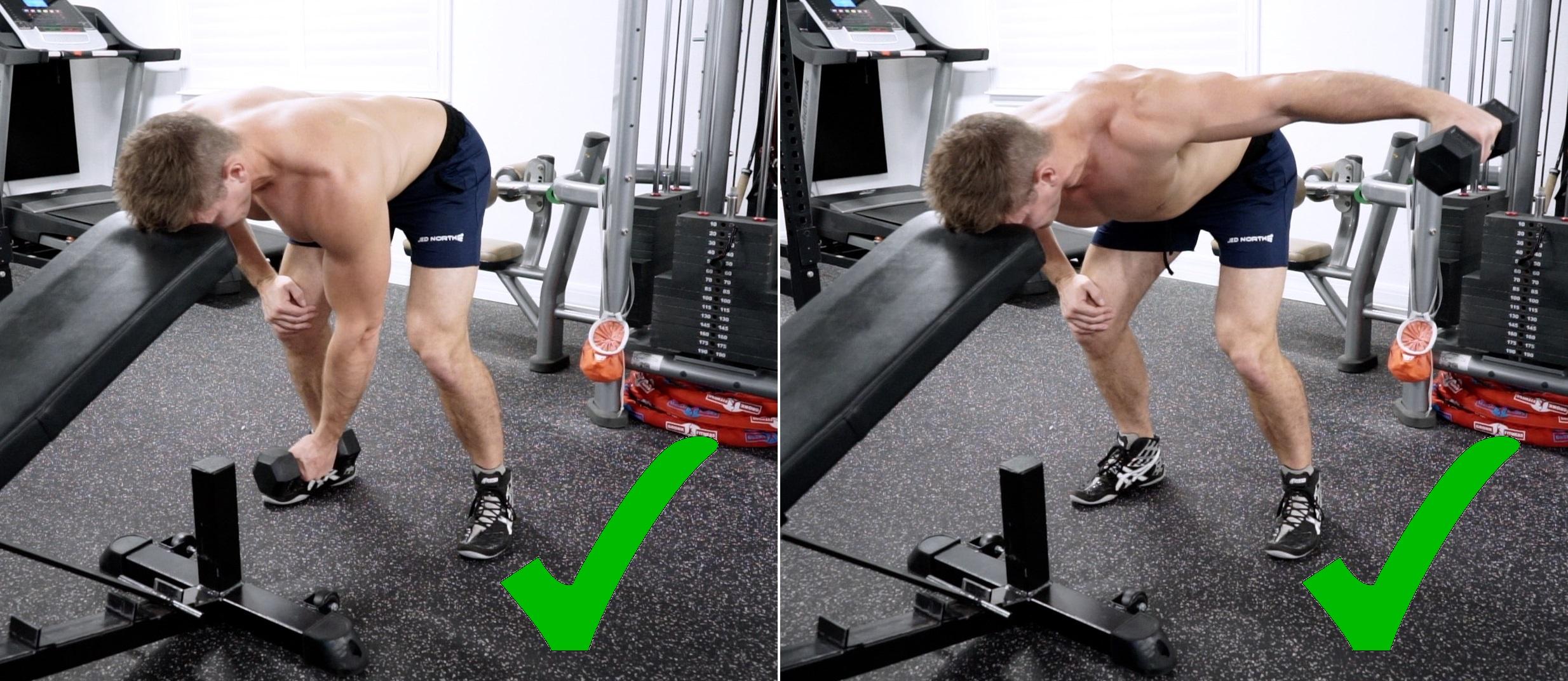
How Do You Apply These Drills To Your Training?
So, here’s what you need to do! Start your shoulder routine with a heavy compound movement, preferably the standing barbell OVERHEAD PRESS. Alternatively, you may also perform a Seated Dumbbell Shoulder Press if for any reason you are not a fan of the Standing Military Press.
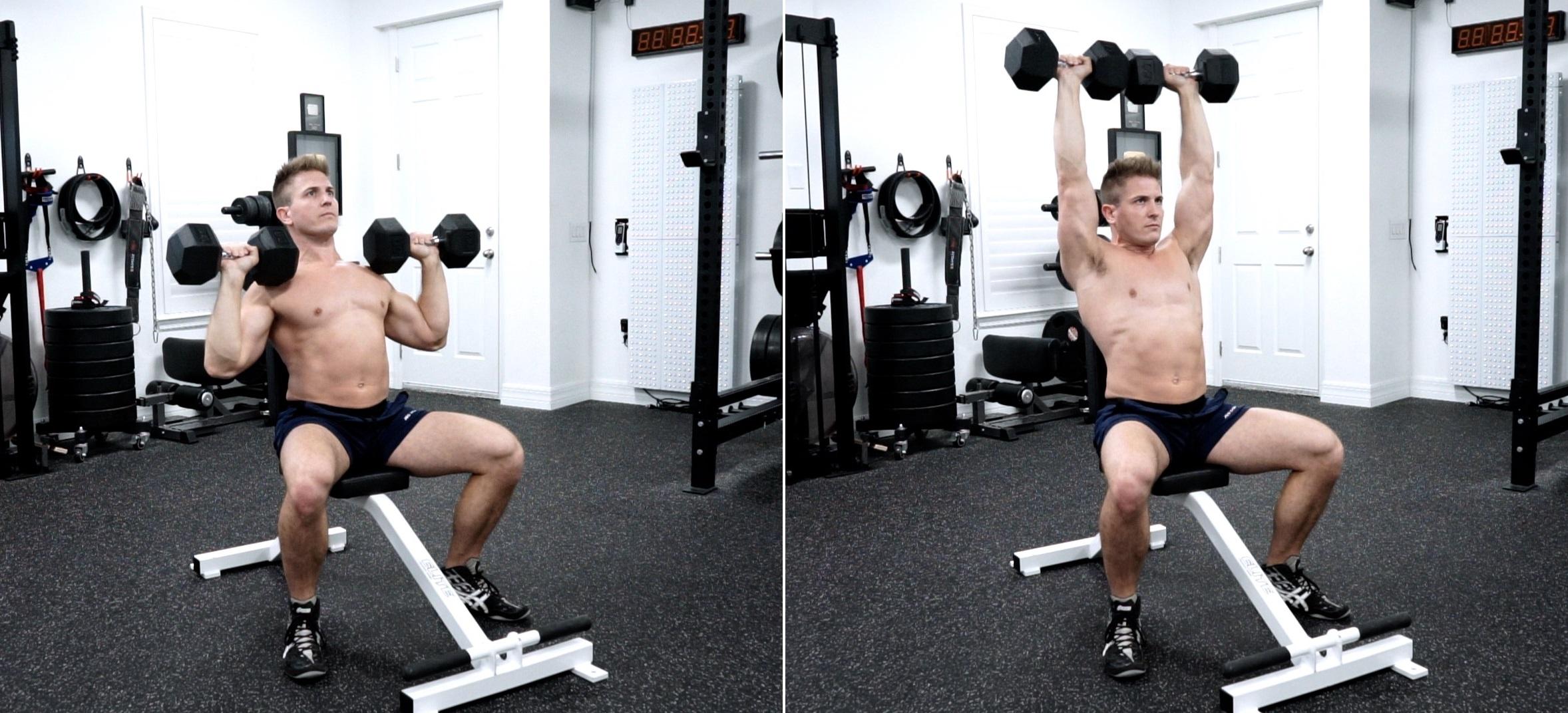
Perform 6 sets of 6 reps and THEN perform the activation drills we just went over. This will allow us to take advantage of your upper body being pre-exhausted forcing you to focus much harder on each deltoid head.Perform 3 sets of 10 reps for each exercise (so front, middle and rear) and this will become your shoulder workout for the next couple of weeks. The more you do these drills, the more you’ll start feeling your deltoids activate on bigger compound lifts and this will lead to bigger and stronger shoulders over time.
Your Next Shoulder Workout
- Exercise 1: Standing Barbell Overhead Press (6 Sets: 6 Reps)
Resting 60 – 90 seconds between sets
- Exercise 2: Side Dumbbell Raise (3 Sets: 10 Reps)
- Exercise 3: Front Dumbbell Raise (3 Sets: 10 Reps)
- Exercise 4: Rear Dumbbell Raise (3 Sets: 10 Reps)
And there is no rest period for the raises because are you going to be alternating arms. So while one arm is working, the other one IS resting.
I really enjoying sharing these quick tips with you! ALSO! My free program GUARANTEED GAINS is pretty much ready and I will be sending out an early release this week to my email list, most likely on Thursday or Friday so if you would like to check it out, when the email box pops up here on the site, just enter your email!








